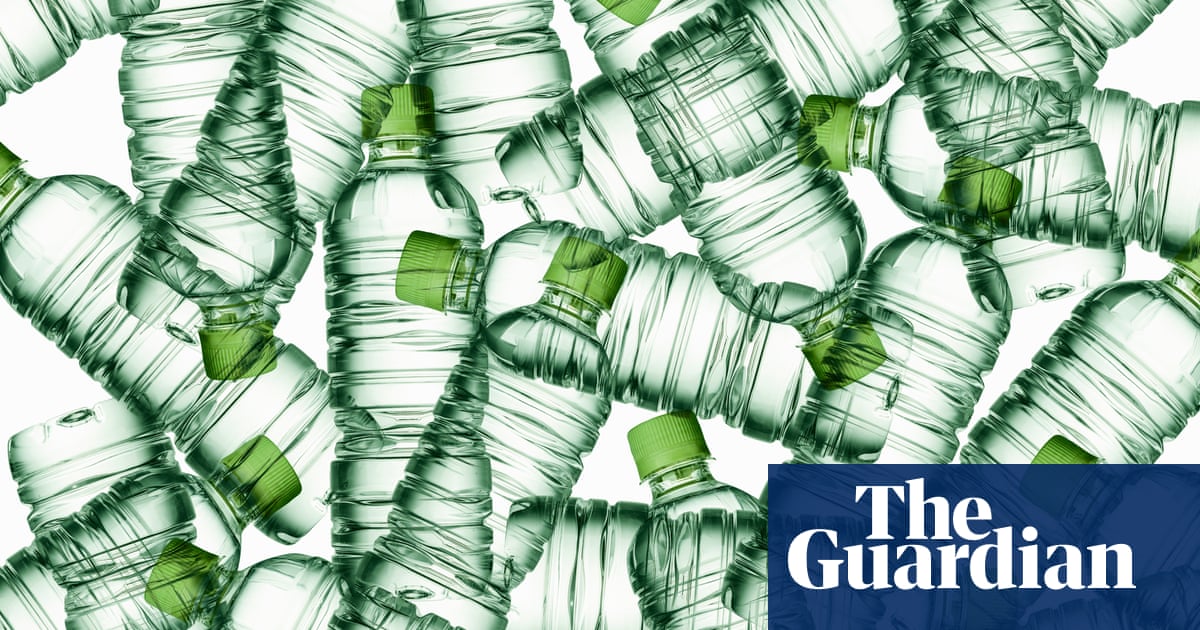- cross-posted to:
- [email protected]
- cross-posted to:
- [email protected]
Mineral water from several European nations has been found for the first time to be contaminated with TFA, a type of PFAS “forever chemical” that is a reproductive toxicant accumulating at alarming levels across the globe.
The finding is startling because mineral water should be pristine and insulated from manmade chemicals. The contamination is thought to stem from the heavy application of pesticides containing TFA, or compounds that turn into it in the environment, which are used throughout the world.
Pesticide Action Network Europe detected TFA in 10 out of 19 mineral waters, and at levels as much as 32 times above the threshold that should trigger regulatory action in the European Union. The findings underscore the need for “urgent action”, the paper’s authors wrote, and come as authorities there propose new limits for some TFA pesticide products.
Related
https://www.theguardian.com/environment/article/2024/aug/16/detroit-tfa-forever-chemical
Sounds like pesticides heavily use it, heavy industry as well as certain clean energy applications. This goes on my list of items containing PFAS, including rain gear, most non-stick cooking equipment, umbrellas, shoes, (gliding) dental floss, cosmetics, all toilet paper, reusable (glass, bamboo) and paper straws, takeaway food packaging, and anything “-resistant” such as grease, water, fire, or heat resistant.
Also, basically most fertilizer or soils that have had any sewage sludge fertilizers in the past 40 years. Which is most of our foods.
At this point, I think it’s just easier to list stuff that isn’t heavily contaminated with industrial runoff or horrible chemicals that bioaccumlate in your body.
when microplastics just doesnt cut it
I’m starting to doubt my reading capabilities. I went through the source and what I read was « Nevertheless, each of the mineral waters tested - even the one with the highest measured contamination of 3,200 ng/l - complies with most of the current human health guideline values set by various authorities in the EU ».
So it is contaminated but within acceptable limits. Traces beside a few brands that have larger traces still within those limits.
That on top with the fact that it seems to only be about bottled water which, at least in Belgium, is neither necessary nor that popular around me, makes me wonder what’s the call to action here.
Nevertheless, each of the mineral waters tested- even the one with the highest measured contamination of 3,200 ng/l - complies with most of the current human health guideline values set by various authorities in the EU ».
So it is contaminated but within acceptable limits. Traces beside a few brands that have larger traces still within those limits.
I looked through many of the links in the article but can’t find this info you quoted. Please verify your source.
Taken from like the 3 rd link in the guardian article and it leads to this page; https://www.pan-europe.info/resources/briefings/2024/12/tfa-‘forever-chemical’-european-mineral-waters?utm_source=Laposta&utm_campaign=Press+Release+32&utm_medium=email


Thank you.
Just want to clarify your position here … you seem to be saying that a recognized forever chemical mostly used in pesticides in the EU, which is due to have its limits dropped in 2026, isn’t causing any problems currently because the EU hasn’t forced the limits to be dropped now?
main source appears to be decomposition of fluorinated refrigerants, not breakdown of pesticides
The evidence agrees with you.
Pickard, the Harvard University postdoc, said there are reasons not to compare TFA to many other PFAS based on current information about health risks. But she disputed the notion that most TFA in the environment is naturally occurring.
While she was a master’s student at Memorial University in Canada, Pickard studied PFAS concentrations in ice cores in the Canadian Arctic. She first planned to measure for the “typical suite of PFAS” but decided to also look for very small forever chemicals like TFA, she said.
In an ensuing 2020 research paper, she and other researchers found that TFA concentrations increased in the ice cores “with the exact timing” of when new refrigeration gases were introduced after the Montreal Protocol, she said. Signed in 1987, the treaty spurred nations to phase out ozone-depleting chlorofluorocarbons (CFCs), leading to the rise of new substances for refrigeration and cooling.
“In these remote regions, I was basically able to say that TFA was coming from these CFC replacements,” Pickard said.
Nope, nothing of the sort. I’m just wondering why the tone of the message from the guardian isn’t in line with the source it cites. They literally say « is ok » so what should be the take away?
Limits are too loose? If so what are good limits to look for? Is it a call to drop bottled water? But then what about city water which isn’t measured as far as I can read; is it better? (I doubt given late incidents in Belgium where water tables were contaminated by local industries).
So what can I do? I’m growing incredibly tired of drama for which nothing can be done at my level.
At least in Germany tap water is more tightly regulated than bottled water.
Still, from the article; « Additionally, mineral water is less contaminated with TFA than tap water on average. »
Sooooo… maybe it is more regulated but tests seems to indicate that it’s still more contaminated -in general.
No, the source doesn’t say “it’s ok”. The source does state that the EU has put new, much lower limits on the chemical but they don’t go into effect until 2026.
This; « complies with most of the current human health guideline values set by various authorities in the EU, even with a high daily consumption of 2 litres » for someone not professionally involved means « is ok ». The authorities in the EU literally say « it complies ».
There are additional limits but from what I can read those re precautions not necessarily coming from health guidelines but from other sciences. Most likely very welcomed precautions though but it still says « complies today ».
Also you are avoiding my main concern which is « then what should I do? ».
We can play semantics the whole afternoon and in the end I agree with the idea that unwanted chemicals must be removed from my food & drinks; but then what? We stop drinking ?
then what should I do?
What did you do when you heard about PFAS/PFOS contamination?
TFA is not usually considered PFAS because while it technically is, it doesn’t accumulate and doesn’t exhibit the kinds of toxicity that longer-chain PFAS do, like endocrine disruption https://pubmed.ncbi.nlm.nih.gov/36800005/
Good to know and very unfortunate that it’s labelled as such by op… sooooo in the end we don’t care about TFA?
well it’s still not broken down in environment so it doesn’t accumulate in people but it accumulates in seawater in general, so it’s probably not good even if it’s not very toxic
Forever young, I want to be
Forever youngI’m a barby girl, in a barby world.
Life is plastic, so fantastic!





